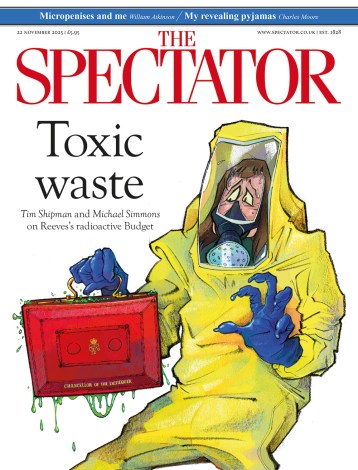Two things it may be wise to know before picking up this relatively short and surprisingly cheerful brand spanking NEW biography of the Antichrist: (1) the meaning of the word ‘eschatological’ (it’s fairly critical); (2) the fact that the Antichrist is not the devil (a common misapprehension). The Antichrist is actually the son/spawn of the devil, and Philip C. Almond has already provided us with a perfectly serviceable biography of the Prince of Darkness himself (also NEW, even though, um, a few years old now).
As a religious/cultural figure the Antichrist was actually a bit of a slow starter. The earliest and most comprehensive text about him, Adso’s A Little Book About the Antichrist (essentially 990 AD’s answer to our present-day The Little Book of Calm) was conceived as a kind of roundabout response to a couple of critical dilemmas facing the fledgling Christian church. The first focused on the question of evil: why did evil continue to blight human experience if Christ had truly died to save us from our sins? Almond argues that
the Antichrist became… a key component of a Christian providentialism that demanded, in spite of the redemption of Christ already effected, a final resolution of cosmic and human evil.
Another (and possibly more pressing) dilemma facing the church related to Christ’s second coming (which, since Jesus had preached an apocalyptic world view, was firmly believed to be imminent by his early followers and disciples). As the decades gradually passed and Christ failed to return, a practical and intellectual void needed to be filled. This would ultimately be resolved by a dogged hunt for clues in some of the Bible’s more prophetic texts: chiefly Daniel and Revelation. But this entire approach, Almond persuasively contends, was, from the outset, ‘fluid and unstable’.
Adso’s Antichrist is the creation of the devil who is born in/through depravity and precipitates the End of Times. Because he is the anti-Christ, this necessitates that he despoils/violates everything that Christ represents (innocence, honour, truth, integrity), although he (like his father) is the Great Deceiver — charismatic, manipulative, unscrupulous, a liar.
Adso, a French Benedictine monk, imagined his Antichrist as an ‘eschatological tyrant’ from outside of the Church. Within 200 years, however, another monk (a Cistercian called Joachim) had postulated the notion of the Antichrist as a deceiver inside the Church (possibly an evil pope). These two interpretations of the Antichrist would continue to operate (in various forms, and sometimes in trenchant opposition to each other) for many hundreds of years to come.
Almond’s book describes in fairly forensic detail how the Antichrist developed conceptually throughout history, how the tag or slur of Antichrist found solidity in numerous political figures and spiritual scapegoats. Was the Antichrist already among us? (Napoleon? Mohammed?) Had we already entered the End of Times? Was he one person or many people? Was he real or spiritual, external or psychological?
What makes this biography really thought-provoking is Almond’s easy demonstration of how ideas actually percolate and embed over time, and how, paradoxically, the greater the distance we travel from actual facts, the greater our sense of confidence in — and identification with — spurious thought systems becomes.
The human mind is designed to look for patterns. It seeks order or meaning via easily consumable, bite-sized formulae. We crave simple explanations for what often appears to be the chaotic randomness of a very complicated life. If only we might find an answer — a loophole, a hidden secret, a structure, a clue…
Almond’s book is littered with torture and execution. These ideas were powerfully contested (different Christian factions used the Antichrist’s actuality or immanence as ammunition both against each other and against different faiths, while Judaism and Islam each developed Antichrists of their own). Opinion-formers died for their musings. And they continue to do so. In our post-Enlightenment world, ideas of good and evil have become increasingly difficult to fathom. Like those early Christians, we have our own void to fill. At the root of it all? Uncertainty. Otherness. Powerlessness. Fear.
Almond sticks to the subject at hand, diligently outlining the intellectual history of his chosen figure. He creates plenty of space within his text for readers to draw their own conclusions. This feels… well, admirable and unusually ego-less in a world which venerates opinion over the mundanity of fact.
We inhabit a rationalist western world where a vast majority of people attest to believing in angels (including dark ones) but not in God; in palpable evil but not in luminous truth; in science but not in fact; in our own freedoms, without accepting that these often depend on another’s servitude. We are primitive, clever, hopeful, reasonable, prejudiced, paradoxical. It’s surprisingly comforting to know, especially now, that it was ever thus.






Comments